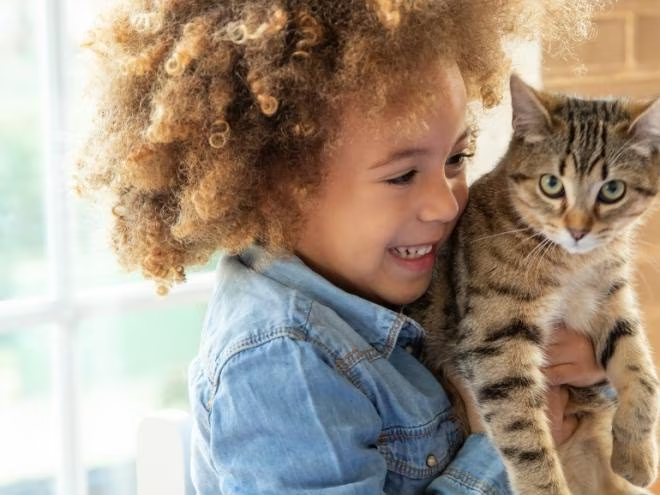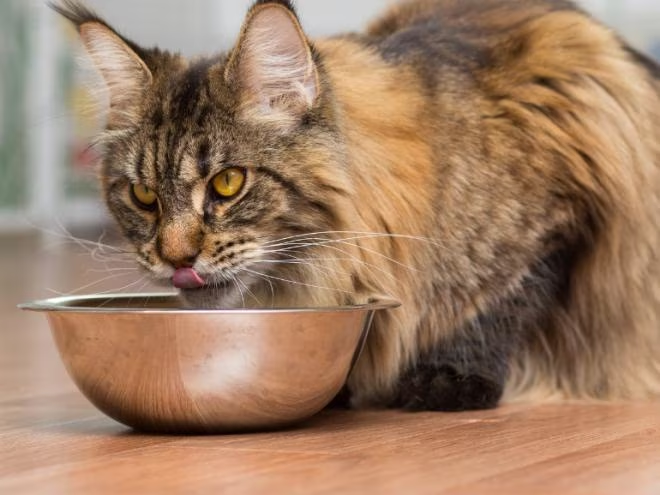Caring for a cat involves more than just feeding and providing a safe home. Cats are complex creatures with unique needs, and as a pet owner, it’s important to understand their health and well-being to ensure they live a long, healthy, and happy life. Here’s everything you need to know about your cat’s care and healthy living.
1. Proper Nutrition: Fuel for Your Cat’s Health
Cats are obligate carnivores, which means they require a diet rich in animal-based proteins to thrive. A balanced diet is essential for maintaining their overall health, energy levels, and immune function.
- High-Quality Food: Choose a high-quality commercial cat food (wet or dry) formulated for your cat’s age, size, and health condition. Look for foods that list meat, poultry, or fish as the first ingredient.
- Portion Control: Measure your cat’s food to prevent overeating, which can lead to obesity. Obesity is a growing concern among cats and can lead to many health problems, including diabetes, joint issues, and heart disease.
- Fresh Water: Always provide clean, fresh water. Cats can be prone to urinary tract issues, and staying hydrated is essential to help prevent these problems.
- Treats and Supplements: Use treats in moderation and ensure they don’t replace a balanced meal. Some cats may benefit from specific supplements, such as omega-3 fatty acids, for healthy skin and coat or probiotics for digestive health.
2. Regular Vet Checkups: Preventive Care Is Key
Routine veterinary visits are essential for keeping your cat healthy. Regular checkups help catch potential health issues early, increasing the chances of successful treatment.
- Vaccinations: Ensure your cat receives the necessary vaccines, such as rabies, feline calicivirus, and feline distemper (panleukopenia). The timing and types of vaccinations will depend on your cat’s age, lifestyle, and risk factors.
- Parasite Control: Protect your cat from parasites like fleas, ticks, and worms. Discuss preventive treatments with your vet, especially if your cat goes outdoors.
- Dental Care: Dental disease is common in cats, so it’s important to brush their teeth regularly or use dental treats and toys. Your vet may recommend professional cleanings if necessary.
- Spaying/Neutering: If your cat isn’t already spayed or neutered, it’s highly recommended. This can prevent unwanted litters and reduce the risk of certain health issues, such as cancers of the reproductive system.
3. Grooming: Keeping Your Cat’s Coat and Skin Healthy
Regular grooming helps maintain your cat’s coat and skin health and provides an opportunity to check for abnormalities such as lumps, bumps, or parasites.
- Brushing: Regular brushing is essential, especially for long-haired breeds. It helps prevent mats, tangles, and reduces shedding. It also helps you spot signs of skin irritation, infections, or parasites early on.
- Nail Trimming: Trim your cat’s nails every 2-4 weeks. Cats that go outdoors may wear their nails down naturally, but indoor cats may need more regular trimming.
- Bathing: Most cats groom themselves and don’t require regular baths. However, if your cat gets into something dirty or sticky, or if they have a skin condition, a bath may be necessary. Always use a cat-specific shampoo.
4. Mental and Physical Stimulation: Keeping Your Cat Active
Cats are naturally curious and playful creatures, and they need plenty of stimulation to stay physically and mentally healthy.
- Playtime: Engage your cat in daily play with toys such as feather wands, laser pointers, or interactive puzzles. Playtime helps prevent boredom, stimulates your cat’s mind, and provides essential physical exercise.
- Scratching Posts: Cats need to scratch to stretch their muscles, mark their territory, and maintain their claws. Provide scratching posts or pads around your home to satisfy this natural instinct and protect your furniture.
- Environmental Enrichment: Give your cat access to windows, perches, or cat trees so they can observe the outside world. Some cats also enjoy watching birds or squirrels from a safe, enclosed space.
5. Safe and Stimulating Environment: Cat-Proofing Your Home
Cats are independent but also need a safe and stimulating environment to thrive.
- Indoor vs. Outdoor: While some cats enjoy outdoor exploration, keeping your cat indoors is generally safer. Indoor cats live longer, healthier lives and are protected from dangers like traffic, predators, and disease.
- Cat-Proofing: Ensure your home is safe for your cat by removing toxic plants, securing dangerous objects, and providing safe spaces for your cat to hide and rest.
- Litter Box Care: Keep your cat’s litter box clean and well-maintained. Scoop it daily, and change the litter regularly. Place the litter box in a quiet, easily accessible area.
6. Understanding Cat Behavior: Communication and Bonding
Cats communicate in subtle ways, and understanding their behavior is crucial for building a strong, trusting relationship.
- Body Language: Pay attention to your cat’s body language. A cat’s tail position, ear orientation, and eye shape all convey different emotions, from contentment to fear.
- Vocalization: While cats don’t typically “speak” like dogs, they do vocalize in different ways. Meowing, purring, hissing, and growling all have different meanings. Learn to recognize the context of these sounds to understand what your cat is trying to communicate.
- Bonding: Spend quality time with your cat. Petting, playing, and simply being present strengthens your bond and reduces stress. Cats are independent, but they also enjoy affection and companionship.
7. Recognizing Signs of Illness: Monitoring Your Cat’s Health
Cats are known for hiding their pain, so it’s important to be vigilant for signs that something may be wrong.
- Changes in Appetite or Drinking Habits: A sudden increase or decrease in food or water intake can indicate health issues like diabetes, kidney disease, or thyroid problems.
- Lethargy or Behavior Changes: If your cat becomes unusually tired, irritable, or withdrawn, it may be a sign of illness.
- Weight Loss or Gain: Significant weight changes can be a sign of health problems and should be addressed with your vet.
- Vomiting or Diarrhea: Occasional vomiting may not be a concern, but frequent vomiting or diarrhea can indicate gastrointestinal problems or infections.
- Breathing Changes: Labored breathing, coughing, or wheezing can be signs of respiratory issues like asthma or heart disease.
8. Aging Cats: Senior Cat Care
As your cat ages, their needs may change. Senior cats are prone to age-related health issues such as arthritis, kidney disease, and dental problems.
- Regular Checkups: Senior cats should have more frequent veterinary visits to monitor their health. Regular blood work and physical exams can help detect early signs of illness.
- Comfort and Mobility: Provide soft bedding and easy access to food, water, and the litter box to accommodate joint pain or arthritis. Consider using ramps or steps for high places if your cat struggles with mobility.
- Diet: Senior cats may benefit from specially formulated senior cat food that addresses their changing nutritional needs.
Conclusion
Caring for your cat requires attention to their physical, mental, and emotional needs. From providing proper nutrition and grooming to offering a safe, stimulating environment and understanding their behavior, every aspect of your cat’s care plays a vital role in ensuring they live a long, healthy, and fulfilling life. Regular veterinary visits and monitoring their health will help you catch potential issues early and keep your cat happy and thriving. With the right care and attention, your cat will enjoy a lifetime of love and comfort in your home.


